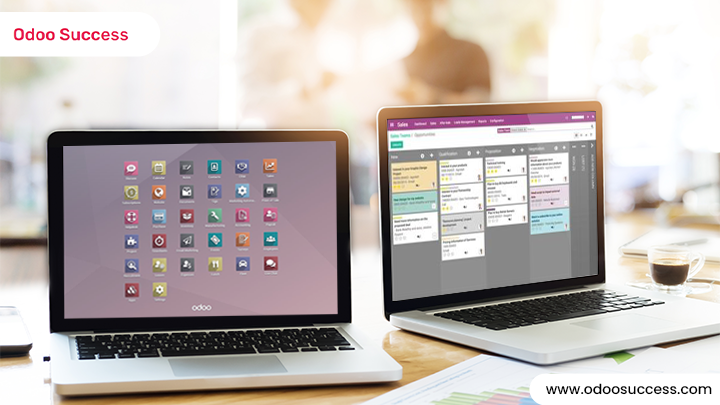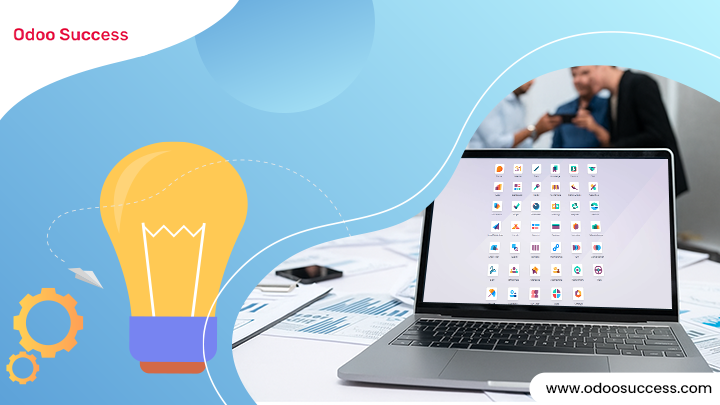Your Roadmap to Odoo Migration Success: From Old to Optimal
Modern Odoo Enterprise Resource Planning (ERP) solutions are essential for directing digital transformation, improving your business operations, and increasing production. Moving from one ERP to the next or relocating to a different Odoo version calls for much more than just software changes; it's about preserving operations, data integrity, and functionality.
One of the most important ideas is Odoo migration success. Odoo migration is the method by which one Odoo version—Odoo v14 to Odoo v16—or another ERP solution altogether is moved. Though the process can be challenging, a successful Odoo migration will ultimately result in an improved Odoo system with improved performance, a superior User Interface (UI) and User Experience (UX), contemporary features, and the foundation for continuing future-readiness.

This blog will discuss Odoo migration, why you would need to go through Odoo migration, the key phases to incorporate into the procedure, hurdles to look for, and advice to achieve Odoo migration success via careful preparation and expert help
Reasons for relocation to the most recent Odoo version
Every fresh Odoo release will include improved performance, security fixes, features, and user interface improvements. One can make several strong arguments to change to another version:
Better performance, pace, and reaction time of all new releases help to minimize lag and delays.
Improved Features:
Better interfaces with artificial intelligence solutions or current reporting and workflow features, along with other integrations, are among other improvements found in new Odoo versions. Maintaining up-to-date programs will let you avoid security vulnerabilities and adhere to the most recent data protection laws. More intuitive dashboards and responsive layouts improve the user experience.
Better integration:
You will have more alternatives to combine CRM tools, current eCommerce systems, and other third-party applications. Staying on an earlier version can not only degrade features and performance but also impede your business and leave your organization vulnerable to operational and security risks.

Odoo Migrations: Types
Two main areas have to be covered by the Odoo migration:
Database migration is the procedure by which the existing data—customers, sales, purchases, inventory, accounting, etc. —from the old version is carried over to the new one. One would anticipate, therefore, that this process must be approached with great care; any data loss or corruption is unacceptable.
To be totally compatible with Odoo's most recent version, your modules have to be rewritten or modified. This covers function testing, process modification, and old API replacement or updating. Data and code components should both be seen in a successful Odoo migration post-upgrade.
Steps to Help Odoo Migrations Succeed
Let's go over the demanded steps to guarantee a safe and unremarkable migration:
- Assessment Before Migration: Before starting the migration, you have to carefully evaluate your actual system. Search for any external connections or custom modules. Look over the volume and complexity of your data. List every business process reliant on Odoo. Describe what you hope to accomplish with the fresh edition: what problems do you want to solve with migration?
- Start by making a thorough backup of any custom code and the present Odoo database. This will let you revert to the last version if something goes wrong during the transfer.
- Review module and app compatibility; using the most recent Odoo version, you will want to assess your existing custom modules. Certain programs may be incompatible; some features could be obsolete. You will have to either re-code or select alternative solutions in these circumstances.
- The critical stage is data migration. Migration scripts or OpenUpgrade from Odoo will move every item—customers, invoices, users, transactions—into the fresh system at this point. To ensure that all data fields are correctly aligned, thorough testing is needed.
- Perform end-to-end functional testing after the migration to verify integration, authorizations, approvals, and workflows. Check that KPIs meet expectations and that reports are properly generated. Quality assurance cannot be sacrificed to ensure a successful Odoo transfer.
- Go-Live and Education:Your staff has to comprehend the features and user interface of the revised edition. Hold training courses before going live to ensure a smooth transfer. Start the new system once everything has been examined and is set. Keep a tight check on events for at least two to three weeks after launch, however.

Typical Difficulties in Odoo Migration
Even with the best of will, movement might provide difficulties. These preparations should be made:
- Data might be lost or corrupted if migration scripts are not correctly managed.
- Downtime: A poorly planned migration might bring business activities to a halt.
- Custom module failures: In the updated environment, older custom modules might not operate.
- Integration Breakdown: APIs may function differently or fail after an upgrade. Performance bottlenecks may stem from unoptimized code or a lack of server capacity.
Overcoming these challenges calls for experience and a carefully considered strategy.
Best Practices for Guaranteed Odoo Migration Success
- Choose the Perfect Migration Partner. Work with Odoo-certified partners proven competent in complex migrations.
- Always use a staging setting instead of direct testing in production. Test in a sandbox or staging environment always.
- Stakeholder communication will help groups know about deadlines, changes, and expected outcomes.
- Track every change, flaw, and correction during the procedure.
- Use automation scripts for data field mapping, backups, and testing, as well as for other repeatable operations.

Conclusion
With the proper partner, you can accomplish Odoo migration success. A successful Odoo migration calls for promoting digital transformation, process optimization, and business continuity as well as software upgrades; with the right approach, resources, and understanding, your company may benefit from a state-of-the-art, scalable, and effective ERP system.
Ten years of Odoo upgrades, customizations, and implementations under O2B Technologies offer end-to-end migration services that assure total data integrity and zero downtime, therefore making it the best Odoo partner if you want a smooth, reliable, and knowledgeable migration experience. Our team of skilled experts ensures your company is prepared for the future right now.
Frequently Asked Questions
1. Migrating to Odoo takes how long?
How long it takes will depend on the complexity of your database, custom modules, and connections. Though complex systems can take months, a basic transfer could take only a few weeks. Estimating timelines depends much on assessment and preparation.
2. Does one need to update to the most current Odoo version?
Yes, keeping the most current version assures security patches, new capabilities, enhanced performance, and continuing Odoo assistance.
3. Will my data be erased during the migration?
Data migration, if properly done, promises no data loss. Working with experts and following demanding testing protocols will help to protect your data during the change.
4. Can custom modules be moved to the most recent Odoo version?
Yes, but custom modules frequently have to be changed or completely rewritten to interface with newer APIs and architectures. Development and compatibility checks often come during the migration process.
5. Why should I work with an Odoo partner to migrate?
Expert Odoo partners offer access to official tools and methods, technical know-how, and experience with a variety of migration situations. This guarantees success and lowers risk.